by Hoity-Toity Otter (and not Abi Cushman)
A little birdie told me something recently that was otterly preposterous. Apparently there are women who… get this… make funny books for kids.
“Really?” I said. “Well this is the first I’ve heard of this and I’ve read many articles about funny kids’ books in major newspapers and magazines, and I don’t recall mention of female authors and illustrators in any of them.”
I continued about my day, chuckling at the very notion. A funny woman?? Who writes for KIDS?? Ho! Ho! Now THAT’S a funny idea for a picture book. For a man to write, of course.
But then something happened. I couldn’t shake this feeling. What if that little birdie was right?? I had to know for sure, so I decided to throw myself into deep research.
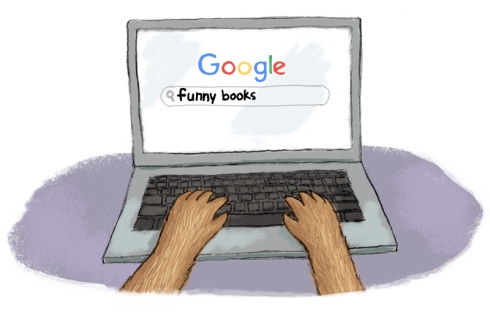
Well wouldn’t you know, there ARE funny female authors and illustrators! Quite a few actually. Dare I say, LOTS. I decided to reach out to some of these creators and gain more insight into this phenomenon. Interestingly, for my first question I got the exact same answer from every single person I asked.
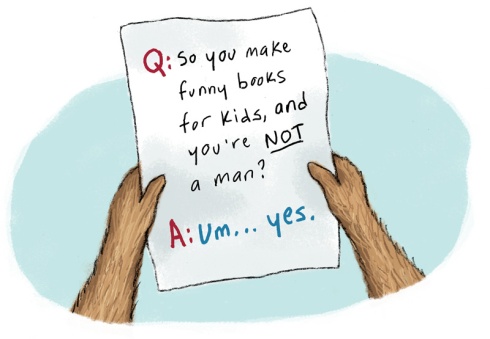
So I felt compelled to dive deeper and learn more about their process for creating really funny books. Here are the results.
- From where do you draw your humor?
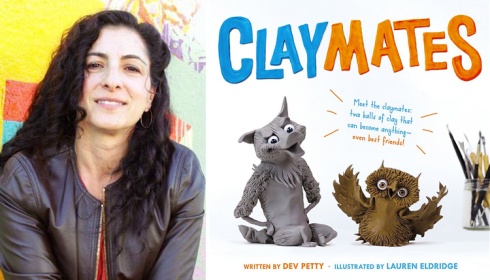
From Dev Petty, author of CLAYMATES:
“Life is funny and occasionally (if not often) somewhat absurd. I draw humor from those uncomfortable and weird bits of absurdity around us and how we humans cope with them. Sometimes I crack jokes when I’m nervous or uncomfortable and that friction, that discomfort, can create a lot of room for humor. I also grew up around a lot of funny, creative people and learned how humor connects people. Basically, if I was entertaining, my family let me stay up late.”
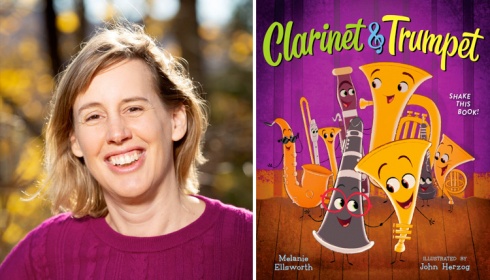
From Melanie Ellsworth, author of CLARINET AND TRUMPET:
“For me, individual words and the way we string certain words together can be very funny. So I’m always on the lookout for a silly turn of phrase – sometimes stolen from my daughter and occasionally something I have misheard. I love playing around with puns and idioms and common expressions and seeing if there’s a story there!”
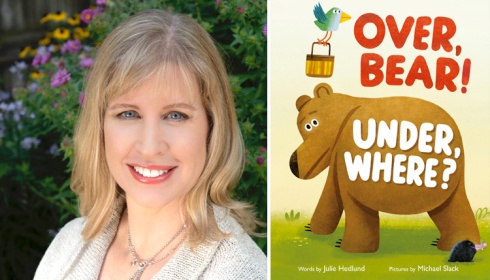
From Julie Hedlund, author of OVER, BEAR! UNDER, WHERE?:
“I get a lot of ideas from movies, comedy shows, books, and even signs and advertisements. When something makes me laugh out loud, I ruminate on WHY it’s funny and brainstorm on how I could make that concept work for kids. I also often get a funny/punny title first and build a story from there.”
- How do you know if your joke will be funny to kids?
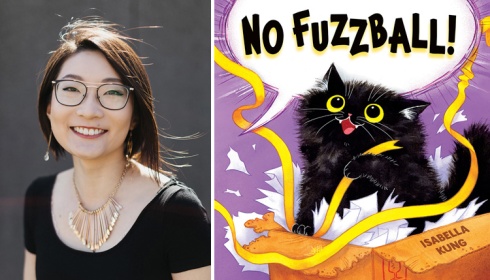
From Isabella Kung, author-illustrator of NO FUZZBALL!:
“First, I would like to acknowledge I am very fortunate that my main character—a cat—is already beloved by many adults and kids. (The internet is obsessed with cat pictures and videos for a reason!) So just getting the character design, attitude, and body language right made a lot of adults and kids laugh. NO FUZZBALL! is very much inspired by my own furbabies, Bubo and Bella. Honestly, I just wrote and illustrated what I found funny and what made me laugh about them. I also drew a lot of inspiration from books and cartoons I loved as a kid. I enjoyed when characters made a mess, and found it hilarious when characters had grand personalities while being completely unaware or misunderstand their surroundings like PINKY AND THE BRAIN. I found that embracing my inner child is the key to writing humor for children.”
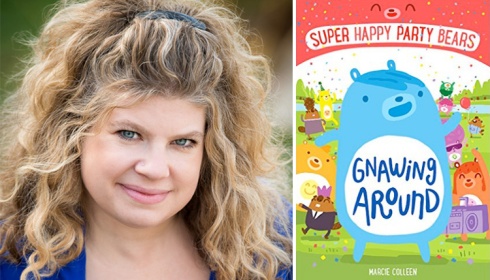
From Marcie Colleen, author of the SUPER HAPPY PARTY BEARS series:
“For me, being attuned to what kids are currently watching in cartoons helps a lot to know what they are laughing at today. When I was writing The Super Happy Party Bears chapter book series my editor asked me to infuse my storytelling with random, absurd humor like in Adventure Time, a popular Cartoon Network show at the time. I sat down and watched several episodes (cool job, right?) and took notes on how jokes were set up, the rhythm of the jokes, and basically the essence of what was considered funny. I was then able to recreate that type of humor when writing my books. Truth is, I’ve never grown up and I LOVE watching kids television. It’s a quick and easy way to see what’s funny to today’s kids. And it’s hella fun.”
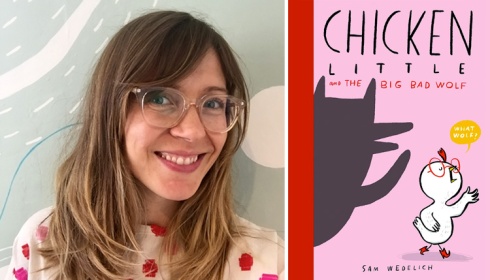
From Sam Wedelich, author-illustrator of CHICKEN LITTLE AND THE BIG BAD WOLF:
“When I’m writing, I try and make myself laugh. That’s the first test. The second test is to read it to kids… I have two kids, so I don’t have to go far, but I also send early drafts or jokes to other friends with kids and get their feedback. Did they laugh? Did they want to hear it again? To me, the highest praise I could ever get on my work is that a kid wants to read it ‘again.’”
- What’s your trick to creating a really funny scene or moment?

From Julie Falatko, author of YOURS IN BOOKS:
“Once I have the story down, I work to shoehorn in as many jokes as I can. I do a revision where all I’m doing is adding as much specific hilarious weirdness as possible. I look at every line and think of how it can either set up a joke or be a joke, and then I make it as silly and weird as I can. Always make it weirder. I have a book with a discarded shoe who likes to sing, one where the main characters wear pizzas on their heads, and one where a dog gives a dramatic speech about a sponge. All those things were added in the “make it weirder” revision.”
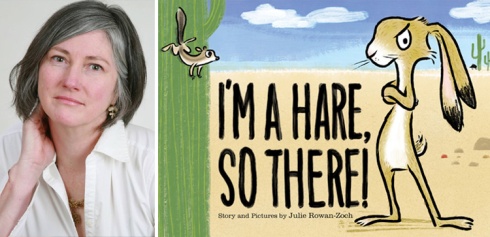
From Julie Rowan-Zoch, author-illustrator of I’M A HARE, SO THERE!:
“More often after I get a drawing or sketch to a point where I am satisfied I take a step back (or hold my iPad further away!) and ask, what can I do that would lift the story – or character look? Especially something that happens to everyone, so viewers can relate, or to evoke an emotion – but something that is not in the text! Add a few lines, move them, or REmove them? A shoe on the wrong foot, perhaps? Gum stuck to it? An eye roll? Maybe with juxtaposition: over-sized ears, a tiny stuffie for a bristly character, an exaggerated mouth wide open on a quiet personality! Would the situation, like a haircut, be more interesting in a kitchen or in a classroom? Unexpected color: purple clouds, mis-matched socks, or green eggs! Even something dark, like a random grimace in a crowd, or a pothole in the character’s path. Or just plain silly, like baby ants in diapers? I suppose it helps having a mind that is always looking for a bit of trouble!”
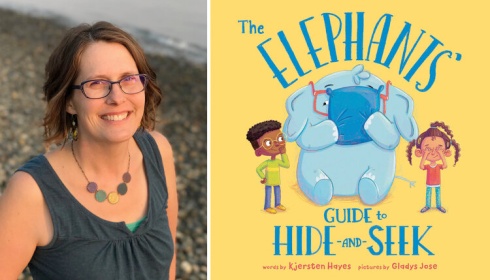
From Kjersten Hayes, author of THE ELEPHANTS’ GUIDE TO HIDE-AND-SEEK:
“My favorite way to create funny scenes is through brainstorming and not stopping with my first idea but pushing myself until I’ve come up with quite a few possibilities. I often set a goal, like I’ll say I need ten different options for how a part will play out and then I’ll brainstorm until I make it to ten. I usually have to get pretty silly to make it that far, which makes things funny. I especially like to use this method to brainstorm how the words and the pictures could show two different points of view or two different parts of the story. Like maybe the character thinks one thing is happening, but reality is a bit different. I also always ask myself after writing a part if this is really the best and funniest possibility I can come up with. I often realize the answer for early drafts is no. Even if I like it, I realize it could be even better. So I try again, and things get funnier. Another small tip—when in doubt, go for drama and exaggeration. Drama and exaggeration are often funny in picture books.”
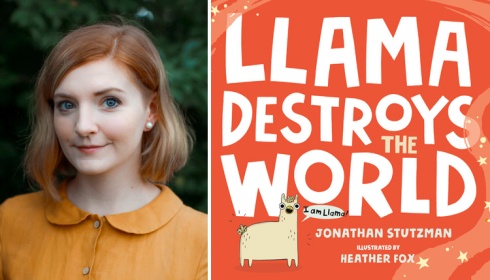
From Heather Fox, illustrator of LLAMA DESTROYS THE WORLD:
“For me, it’s all about facial expressions and body language- specifically the eyes! That being said, you might notice that a lot of my silly book characters have really big eyeballs.This proves useful in scenes that don’t have dialog (and even ones that do!) with conveying a character’s expressions, emotions, and thoughts. Humor often comes from not just a situation, but the reaction of the character in that situation.”
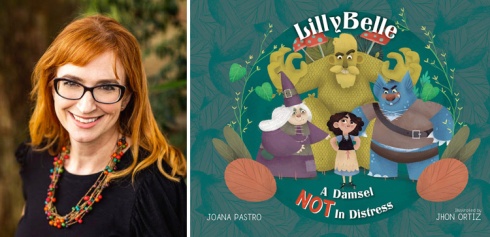
From Joana Pastro, author of LILLYBELLE, A DAMSEL NOT IN DISTRESS:
“My favorite line in LILLYBELLE, A DAMSEL NOT IN DISTRESS belongs to the witch. When she says: “It’s a monstrosity! I love it!” It’s a simple line, but I find it hilarious—especially when read aloud—because she uses the word monstrosity in an unpredictable way, as a compliment. So, when I’m working on a funny story, I always aim for the unexpected by searching for out-of-the-box situations or the unfiltered honesty that young children have. If I want to amp the humor, I will make a list of predictable outcomes and then a list for absurd ones. I love a good twist, a great surprise. That’s what I always aim for.”

From Tammi Sauer, author of NOT NOW, COW:
“I think every writer has different strengths, and one of mine is humor. Most of what I write just comes out funny. Even so, I don’t settle. When I’m working on a manuscript, I keep toying with each word, each line, and each scene until I get that YESSS feeling. The YESSS feeling usually involves me laughing and crying alone in my office but whatever. It’s the best.”
- What do you do if your editor/agent/art director doesn’t ‘get it’?
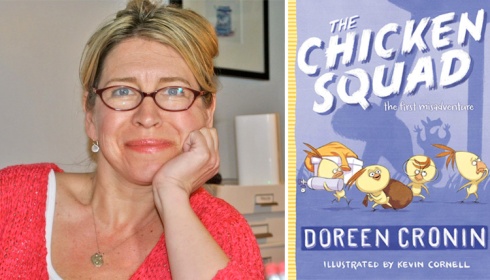
From Doreen Cronin, author of THE CHICKEN SQUAD series:
“Ha! This happens all the time. I can get in a groove where I think everything is funny. When I hear back that I am alone in that — I re-write. It’s like writing any other genre, not everything you think is coming across (humor, emotion, plot) is coming across clearly. Re-write, re-write, re-write. Comedians work out their material in a room with an audience and sharpen it until it really works. Writers do the same. Your audience becomes your agent, editor, art director, etc. (My kids tell me how “not funny” I am all the time!) It’s usually more about sharpening than deleting all together. For every 30 jokes you write, three of them might actually be ready. Rewrite! The punch-line is there, it just might be circling and you haven’t really brought it in for a landing.”
Well to quote Baby’s father in Dirty Dancing, a movie all sea otters love quoting, “When I’m wrong, I say I’m wrong.” I was absolutely bowled over by those responses and give those creators my otter-most respect.
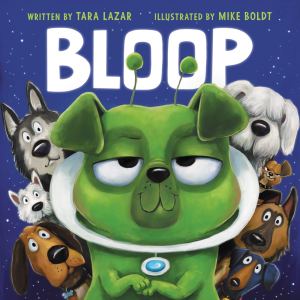 And guess what! It gets even better. I have a special bonus round with the fabulous host of this blog and the author of many funny kids’ books including the upcoming picture book, BLOOP, illustrated by Mike Boldt. It’s the one and only, Tara Lazar! Thank you, Tara, for making my research project extra otterrific.
And guess what! It gets even better. I have a special bonus round with the fabulous host of this blog and the author of many funny kids’ books including the upcoming picture book, BLOOP, illustrated by Mike Boldt. It’s the one and only, Tara Lazar! Thank you, Tara, for making my research project extra otterrific.
So Tara, where do YOU draw your humor from?
My father had a dry wit with zingy one-liners. I grew up with his humor, so it was bound to rub off. We watched funny movies together (his favorite was “My Cousin Vinny”) and he let us stay up late to watch Saturday Night Live. What’s especially funny is that he had a very serious, boring job (at least in my opinion) as a chemical patent attorney. I think his humor provided much needed comic relief at work! But he was obsessed with MAD Magazine as a kid—hiding cut-outs of Alfred E. Neuman all over his house to surprise his parents—so I think he was always funny.
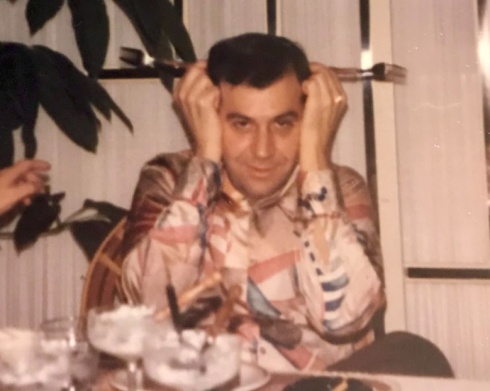
My dad, circa 1979
How do you know if your joke will be funny to kids?
Well, I’m still in second grade, so if I laugh, I’m pretty sure kids will, too. I laugh at silly things my own kids roll their eyes at—but they’re teenagers, so, like, pinch of salt.
What’s your trick to creating a really funny scene or moment?
There’s no trick, really. Humor comes from surprise. Sometimes I’m shocked at what spills out because I wasn’t expecting it, either!
What do you do if your editor/agent/art director doesn’t ‘get it’?
I’m lucky in that my agent does GET IT. But sometimes an editor doesn’t. If they provide comments that resonate and ask for a rewrite, I’ll do it. But those that don’t GET IT just don’t and there’s nothing I can do but move on to the next editor. Humor is subjective.
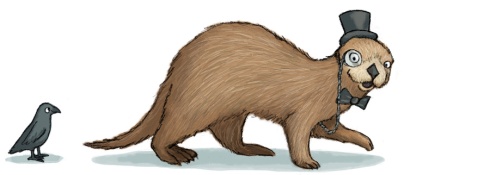
Well, I don’t know about you, but this hoity-toity otter sure learned a lot! And you know what? I just got a wild idea! Maybe someone should tell those newspapers and magazines they’re missing out and should include funny women in their articles! Why hasn’t anyone else thought of this?? I’m going to go do that right now. Ta-ta!
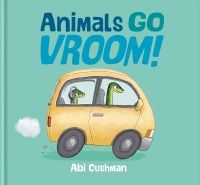 Hoity-Toity Otter is not only the author of this article, he also plays the small but pivotal role of “Taxi Cab Passenger Who Eats a Three-Course Meal While Sitting in Traffic” in the upcoming picture book, ANIMALS GO VROOM!, which rolls onto shelves on July 13, 2021 from Viking Children’s Books.
Hoity-Toity Otter is not only the author of this article, he also plays the small but pivotal role of “Taxi Cab Passenger Who Eats a Three-Course Meal While Sitting in Traffic” in the upcoming picture book, ANIMALS GO VROOM!, which rolls onto shelves on July 13, 2021 from Viking Children’s Books.
 Abi Cushman is the author-illustrator of ANIMALS GO VROOM! and SOAKED!, which was a Kids’ Indie Next Top Ten Pick for Summer 2020. She has also worked as a web designer for over 15 years, and runs two popular websites of her own: MyHouseRabbit.com, a pet rabbit care resource, and AnimalFactGuide.com, which was named a Great Website for Kids by the American Library Association. In her spare time, Abi enjoys running, playing tennis, and eating nachos. (Yes, at the same time.) She lives on the Connecticut shoreline with her husband and two kids.
Abi Cushman is the author-illustrator of ANIMALS GO VROOM! and SOAKED!, which was a Kids’ Indie Next Top Ten Pick for Summer 2020. She has also worked as a web designer for over 15 years, and runs two popular websites of her own: MyHouseRabbit.com, a pet rabbit care resource, and AnimalFactGuide.com, which was named a Great Website for Kids by the American Library Association. In her spare time, Abi enjoys running, playing tennis, and eating nachos. (Yes, at the same time.) She lives on the Connecticut shoreline with her husband and two kids.
If you’d like to learn more about Abi and her books, you can visit her website at AbiCushman.com. For special giveaways, sneak peeks, and more hoity-toity otter musings, subscribe to her newsletter.
Source : Funny AND Female: A Research Project by a Hoity-Toity Otter









